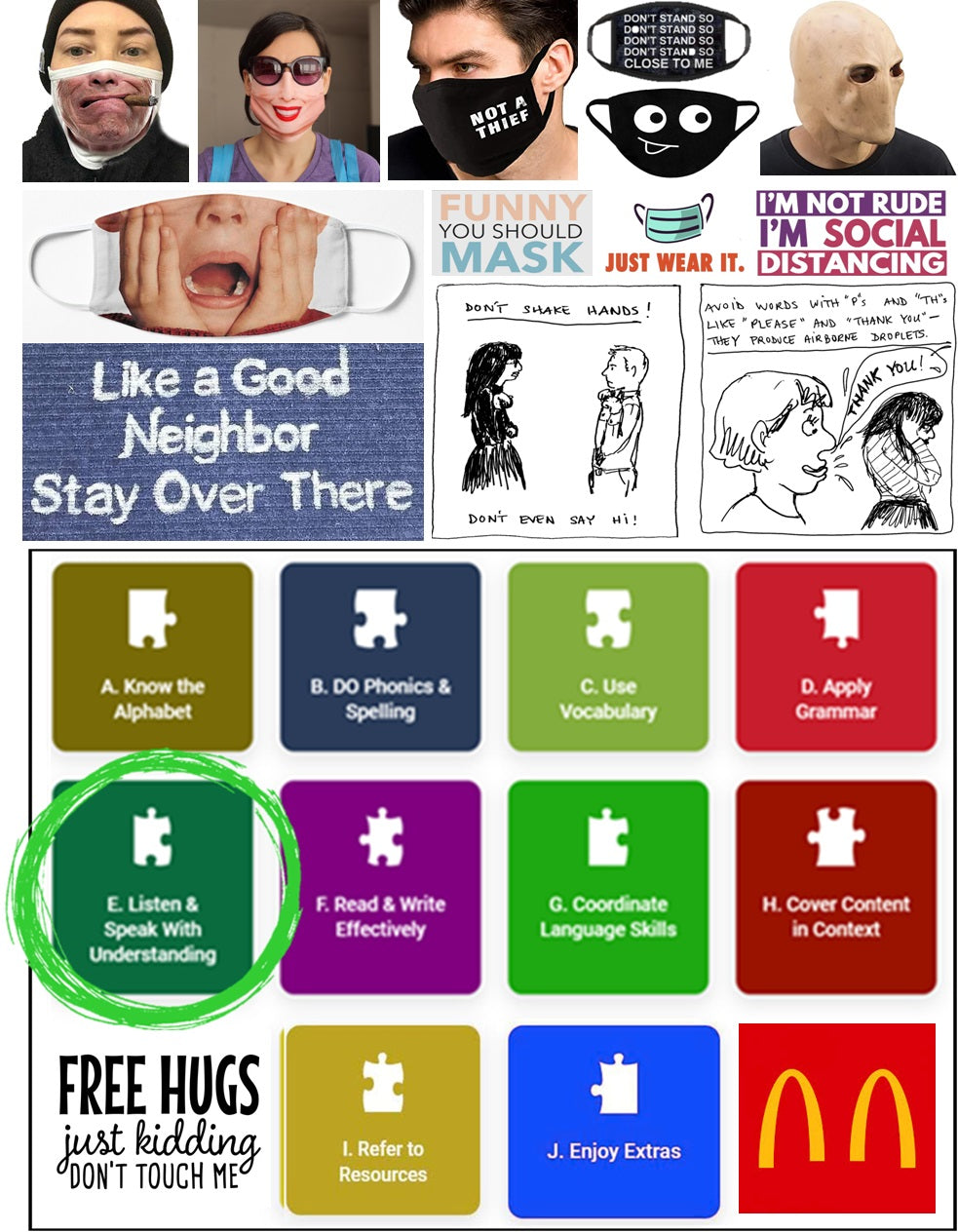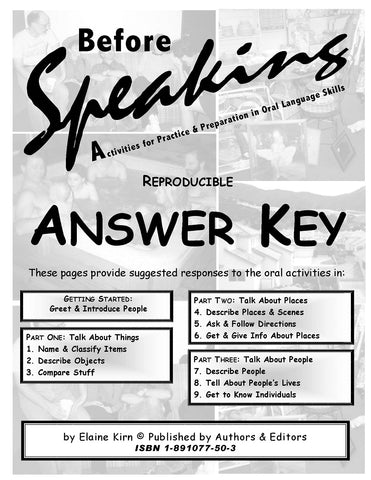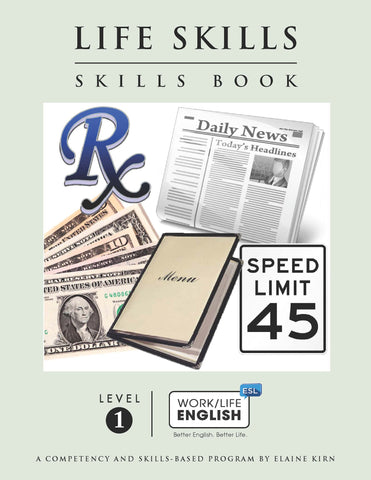Competency Puzzle “Listen & Speak with Understanding” E-00.01a & b: Get & Assert Meaning with Body Language
Remember when we used to try to hear & be heard—coming closer & closer to each other through clear communication? Well, here’s what our mad modern times might now think of Puzzle Piece E: Listen & Speak with Understanding. (It’s circled in the graphic of ten major “Puzzle Parts & Pieces A-J for Language Instruction” below.)

Competency Puzzle “Listen & Speak with Understanding” Pieces E-00.01a & b: Get & Assert Meaning with Body Language
This article is the first installment of “How to Put Together Puzzle Parts & Pieces That Make Language Work: E. “Listen & Speak with Understanding.” Its main aim is to insure people’s understanding and expression of meaning non-verbally.
Why Understand & Communicate (First) with “Body Language?”
At any time during an Oral-Skills (or other) Language course of study, the subject of “Body Language” is likely to emerge (physically). That's because non-verbal postures, movement, touch, hand gestures, facial expressions, spacing, and other bodily signals often have meaning. Of course, so do the attitudes & messages that tone of voice, stress, rhythm, intonation, pausing, and actual wording are meant to convey in audible utterances.
Even with face masks that don’t have messages or images printed on them, someone’s eyes, forehead, and other body parts can give clues to his/her emotions or states of mind, attitudes or intentions, personality or character. Nowadays, (pandemic-prescribed) social distancing (standing or sitting over six feet apart) may not communicate a sense of “seeking privacy,” “alienation,” or “animosity” like it used to. Still, even at a distance, body stance and motion can convey volumes of connotation. They can suggest (calm or strong) feelings or thoughts that put people at ease, build trust, and draw others in (symbolically)—or they can annoy, confuse, or hurt.
All the more compelling might be facial expressions—configurations of the mouth, nose, eyes, brows, and other facial muscles that (in)voluntarily reveal what people mean (to say)—especially if accompanied by perceptible sounds, words, and/or connected speech. And smiles, grins, grimaces, frowns, scowls, open mouthing, puckering, nose wrinkling, blinks, winks, and other “faces” people make can easily communicate happiness, gentleness, warmth, shock, surprise, fear, disgust, contempt, anger, anxiety, and more.
These signals become even stronger when they’re viewed close up on the screens that are everywhere—during virtual meetings, remote learning, visual telephoning, and other real-time interactions. So do sign languages (“visual-manual modalities that ‘speak’ without audio”) and gesturing (“non-vocal pantomime of mostly the hands and arms”).
In other words, Body Language is important! So in “Parts & Pieces That Make Language Work: E. Listening & Speaking with Understanding,” how can nonverbal behavior be incorporated into pedagogy, lessons, activities, and other kinds of instruction for novices and/or experiencing learners of English & culture? With (animated) visuals, of course.
Like us, you can get the human images you need for Body Language from “real people in real life.” Below are two pages of E-00.01b, a file of 24 colorful pages to be printed out back-to-back on stiff paper and cut apart, resulting in 104 two-sided Body Language Cards.
Meant to serve in “lessons” involving similarities, differences, and (deep) meanings of postures, expressions, & gestures in American vs. world cultures, the 104 photographic images from a long-gone era are organized into 26 alphabetized, sets-of-four representing “Categories of Meaning,” such as Anger, Boredom, Craziness, Drama, Embarrassment, Fun, Greeting, etc. Under each item is its label + description. (The full set of materials is available on the E-00.01b Meanings of Body-Language 108-Card Pack A-Z Product Page.
So how to make use of photographs, cartoons, drawings, classifications of meaning, course lessons, card games, and moving activities involving Body Language? Meant to send a message of “gifting,” here’s a Download of the 28-page E-00.01a Meanings of Body-Language Activity & Idea Book. It has sections named “Why Include Unspoken Meanings of Nonverbal Body Language in Teaching & Learning English?” “How Can ‘Body Language’ Be Taught or Learned?” “General Features of Movement,” “Universal Expressions of Emotion,” “Some Relationship Postures,” “Using the Non-Verbal Image Card Decks A-M & N-Z,” etc.
For learners of English-as-a-Second Language, there are parts of Oral-Skills texts that focus on the Physical Description of Body Language as content. The first ten pages of Part Three-7: Describe People, from Before Speaking: Activities for Practice & Preparation in Oral Language Skills display Grammar Notes: Adjectives After Verbs & Before Nouns; Present Continuous Verb Phrases—plus Vocabulary Notes: Adjectives of Description (Shape of Face, Hair, Facial Features); Expressions & Feelings; Body Language.
The directives for activities are “7.A Describe Faces,” “7.B Explain Facial Expressions,” and “7.C Explain Body Language.” In these and other words, there’s a lot of vocabulary to enable speakers to talk about non-verbal interaction. And just because it’s hard for us to hush up, 16 attached Answer Key pages of suggestions for effective language offer many, many more words.
But of course, you can—and should—create your own (personalized) visuals to use in fostering language educators’ / students’ application of bodily postures, actions, gestures, facial expressions. Whether these “observables” literally move or not is up to you. Most recognizable will be real (face-to-face) or remotely accessible body and facial signals that have significance.
Also helpful—especially to advancing students and native speakers of English “in search of silent meaning”—or who want to make their verbal messages more important or compelling—might be online articles on the these topics. For example, “Understanding Body Language & Facial Expressions,” illustrates and discusses Facial Expressions, the Eyes (Eye Gaze, Pupil Size), Mouth Movements, Gestures, Standing Postures, and Personal Space (Intimate, Social, & Public Distance). Nonverbal Communication: HelpGuide answers some interesting questions, such as “Why does nonverbal communication matter?” “Can it be faked?” “How can it go wrong?” It also offers tips on how to “improve unspoken communication,” “develop emotional awareness,” “read body language,” and “evaluate nonverbal signals.”
For full versions of complete Listening / Speaking texts that cover these ideas and many. many “higher-level” ones, be sure to take a look at what’s behind Puzzle Piece E: Listen & Speak with Understanding on the homepage of worklifeenglish.com.
For monthly email newsletters with free tips, tools, and resources for English language teachers and learners, sign up here!


















